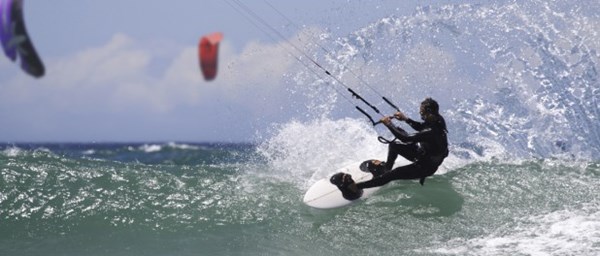TORONTO, May 26, 2014 (GLOBE NEWSWIRE) -- Have you ever gone to the ocean or a lake and watched surfers glide across the water and perform acrobatic stunts in mid-air—behind a kite? Kiteboarding (or kitesurfing) is an extreme sport gaining popularity in Canada that combines windsurfing, paragliding, skateboarding and gymnastics by harnessing the power of the wind using specially designed kites. Kiteboarders not only can glide along the water in all directions but also can jump high above the water's surface.
Much of the equipment for kiteboarding is made possible by plastics, starting with the board. Kiteboards most closely resemble snowboards and typically are made predominately with durable, lightweight plastic foam. Most boards are outfitted with some type of foot bindings or hook-and-loop straps made from plastics that keep the kiteboarder attached to the board, while also providing a quick release if needed.
Arguably the most important decision a kiteboarder makes is the choice of kite. As a general rule, the stronger the wind, the smaller the kite should be, since a large kite is more difficult to control in high winds. One popular type of kite, called a leading-edge inflatable, is made of rugged polyester plastic fabric and contains plastic bladders that inflate with air. These lightweight, air-filled bladders help the kite maintain its shape, keep it afloat in the water, and make it fairly easy to launch and relaunch, even when wet.
While on the water, the kiteboarder controls the kite by hand with three to five "flying lines" ranging from seven to 33 metres long. These lines often are made with ultra-high molecular weight polyethylene, an extremely strong yet flexible plastic that can withstand a tremendous amount of force without breaking.
The flying lines are attached to a sturdy, nylon plastic harness that helps the kiteboarder distribute the tension from the lines throughout the body rather than only hands and arms. The various types of harnesses are made predominately from combinations of hard and soft plastics. Waist harnesses are popular among advanced riders, while beginners often prefer seat harnesses that require less effort. Larger vest harnesses also provide additional impact protection, floatation, and insulation, thanks to tough but lightweight plastics.
Other plastic gear also can contribute significantly to kiteboarders' safety. Some kiteboarders wear a helmet with a hard plastic shell that is lined with foam plastic to fit snugly and absorb impact. A wetsuit made of neoprene plastic makes possible cold-water kiteboarding, and as a bonus helps protect against abrasions. And some kiteboarders keep a two-way radio or mobile phone in a "dry bag"—a plastic, waterproof pouch—in case of an accident.
Like some other extreme sports, many of the advances in kiteboarding have been made possible in part by plastics. Lightweight, durable and increasingly affordable, plastic kiteboards and gear are playing a big role in this sport's explosive growth.
Today's intelligent plastics are vital to the modern world. These materials enhance our lifestyles, our economy and the environment. For more information visit www.intelligentplastics.ca.
A photo accompanying this release is available at:
http://www.globenewswire.com/newsroom/prs/?pkgid=25554
